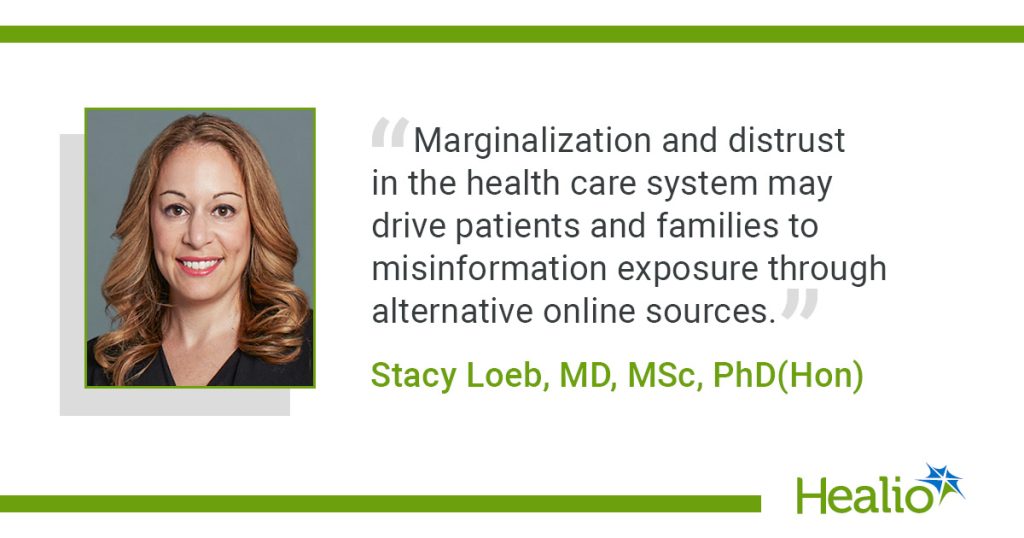The Pervasive Threat of Cancer Misinformation on Social Media
The digital age has ushered in unprecedented access to information, but this accessibility comes with a shadow: the proliferation of misinformation, particularly regarding health. Social media platforms, while offering valuable connections and communities, have become breeding grounds for false and misleading claims about cancer, impacting patient care and eroding trust in the medical community. This alarming trend was highlighted at the Collaboration for Outcomes Using Social Media in Oncology (COSMO) Meeting in Providence, Rhode Island, where experts underscored the urgent need to address this pervasive issue.
Dr. Stacy Loeb, a professor of urology and population health at NYU Langone Health and Manhattan Veterans Affairs, presented compelling evidence of the widespread nature of cancer misinformation online. She emphasized that this misinformation spans various platforms, affecting information related to numerous cancer types. The research presented paints a stark picture: a significant portion of online content related to cancer is inaccurate, misleading, and potentially harmful. This misinformation can range from inaccurate claims about cancer causes and symptoms to dubious endorsements of unproven supplements or restrictive diets.
A key concern highlighted by Dr. Loeb is the disproportionate engagement with misinformative content compared to accurate, evidence-based information. Studies have shown that misleading and even harmful content often garners more views, shares, and interactions than credible sources. This phenomenon is further compounded by the underlying distrust in the healthcare system, which may drive individuals, particularly those from marginalized communities, to seek alternative sources of information online, making them more vulnerable to misinformation.
Dr. Loeb’s research into prostate cancer misinformation provides a concrete example of this pervasive problem. Her findings revealed alarming rates of misinformation across various platforms. YouTube, the most widely used social media platform, hosted a substantial amount of misinformative videos about prostate cancer. Similarly, a considerable portion of Instagram and TikTok posts, Pinterest pins, and even podcasts contained inaccurate or misleading information. These findings suggest that individuals seeking information about cancer online are highly likely to encounter misinformation, potentially influencing their decisions about diagnosis, treatment, and overall health management.
The consequences of cancer misinformation can be far-reaching and devastating. Delayed medical care, unrealistic expectations about treatment outcomes, dangerous medication interactions, and financial exploitation are just some of the potential harms. Furthermore, misinformation can strain the patient-physician relationship, creating an environment of distrust and hindering effective communication. Dr. Loeb stressed that valuable time during patient consultations is often consumed debunking myths and correcting misinformation, detracting from crucial discussions about treatment plans and informed decision-making.
Combating this pervasive problem requires a multifaceted approach involving various stakeholders. Dr. Loeb advocated for a collaborative effort involving healthcare providers, community health workers, health systems, and professional organizations. Educating patients about identifying and critically evaluating online information is crucial. Equipping individuals with the skills to discern credible sources from misinformation is a vital step in mitigating the harmful effects of false claims. Health systems can play a critical role by conducting community outreach programs, particularly targeting marginalized communities who may be more susceptible to misinformation due to systemic disparities in healthcare access and trust. Professional societies can also contribute by holding healthcare providers accountable for spreading misinformation and promoting evidence-based practices.
Future research should focus on understanding the underlying psychological drivers of misinformation consumption. Identifying vulnerable populations and developing targeted interventions are crucial for effectively addressing this problem. Furthermore, establishing clear standards for identifying and responding to misinformation is essential for creating a more responsible and informed online health information landscape. While the prevalence of misinformation has been extensively documented, further research is needed to fully understand its real-world consequences and develop effective strategies for mitigation. Quantifying the impact of misinformation on patient outcomes is crucial for guiding future interventions and policy decisions.


